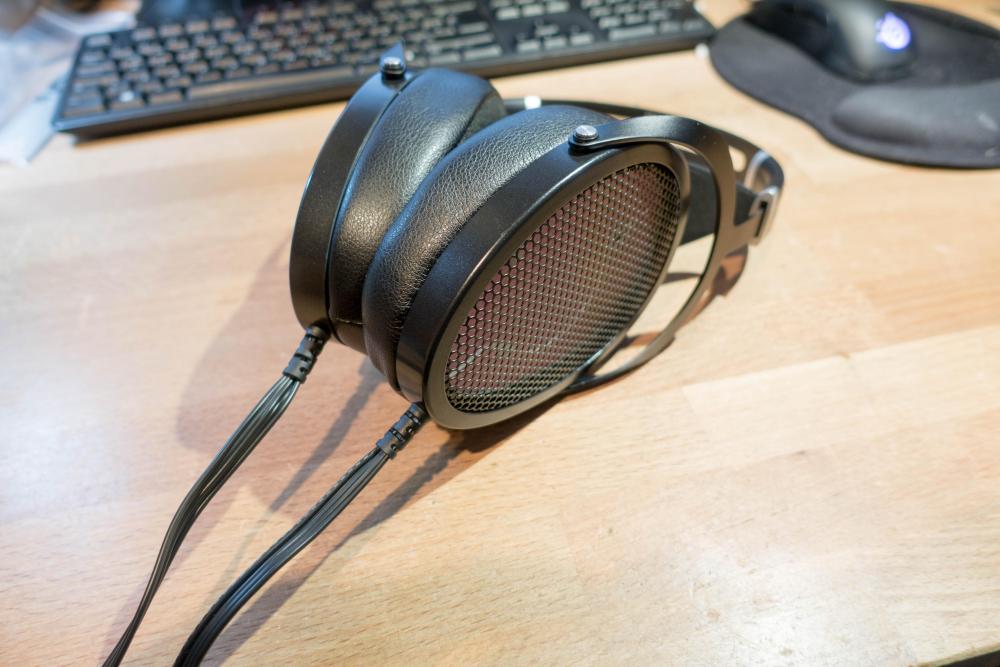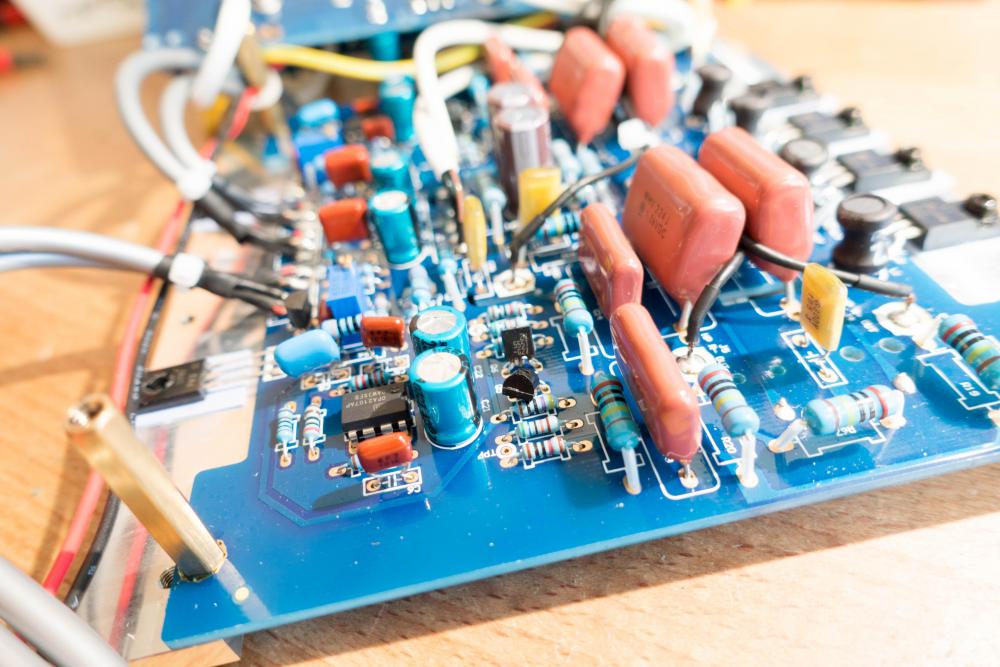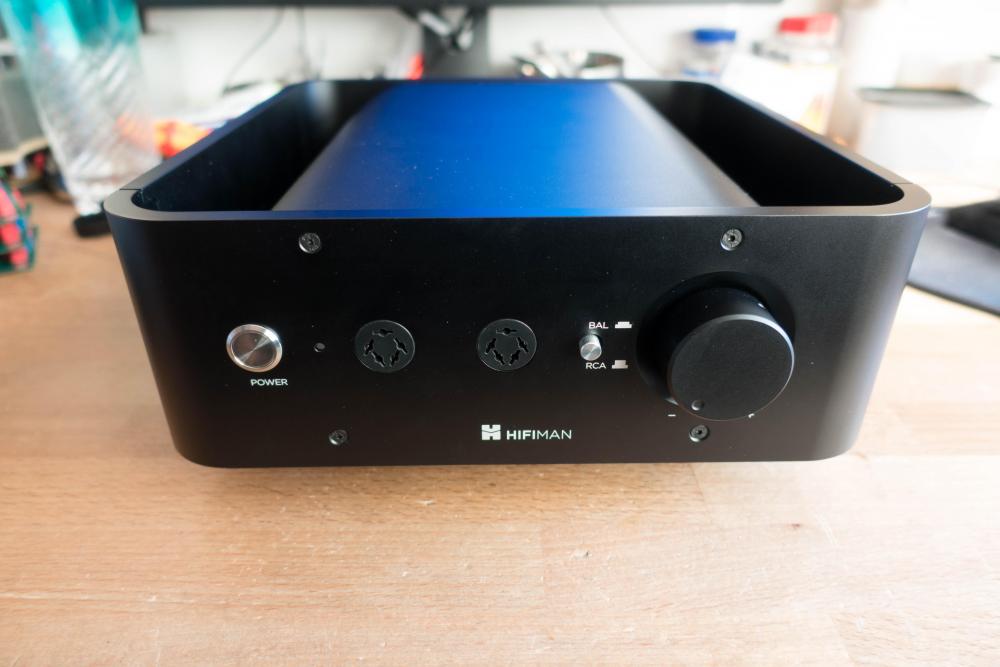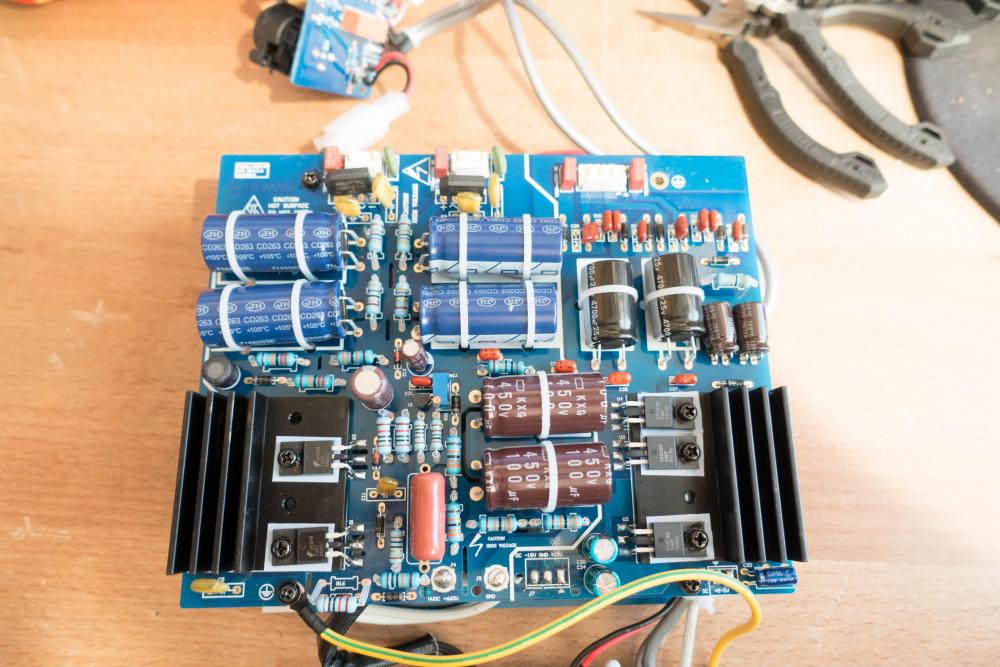-
Posts
14,493 -
Joined
-
Last visited
-
Days Won
23
Content Type
Profiles
Forums
Events
Everything posted by spritzer
-
Yeah, I'd go for that as well, hell even the Massdrop ESP950 at 500$ is better than this shit. Also bonus bit, there were holes in one of the dust covers. Yeah...pure quality. I just quickly patched them up with some tape until I have time to replace it. Also there was a small port on the cable entry which I plugged. There are also holes next to the swivel axis so I plugged those too. A small improvement to the bass or it was due to the cable... not sure. Need to do more testing
-
Well I was finally fed up with the shit cable so out came the tools... One funny thing, I just read through the manual and it specifically states that these have a gold plated plug...which they don't have in reality. Why state something which ever owner will easily spot as a lie? Similar earpads to the Shangri-La Jr. The protective mesh is just a black PCB and the other side even has some production markings on the silkscreen. First reveal and yup...these are 100% pcb. Just stacked up in the baffle and no glue at all. Now comes a pile of pics: It's an interesting design but from a build quality point of view, this is miles away from what Stax are doing. One other thing, the headphones are wired up backwards, + output is wired to the back stator. The back grills just drop out and are not fastened in any way. Time for a new cable. The wide PC-OCC Stax cable is a tight fit but it does work. All done.
- 125 replies
-
- 10
-

-

-

-
Thin and a bit lifeless with reasonably good soundstage. Not bad but not great either and it really depends on what you are listening to. On some music it is unbearably thin while on some it works just fine. The cable is the biggest issue one these though, it's too short and just unsafe garbage. I'm also detecting some noise in the left earpiece so squealing might be an issue with these. Some notes on the amp, the XLR input is completely fake and the - leg of the input just goes through a 630 ohm resistor to ground. Pure class there... The soldering on this thing is world class in the wrong direction, a lot of parts are loose when I try to move them so I wonder if this thing passed through quality control at all. I never turned it on so I can't know if it ever worked. I will go through it and make something usable from this mess though... I was looking up the caps I had never come across and yup, they will be out of there. I'm also going to redo the input section completely as the stepped attenuator feels like garbage. Some 10M90's instead of the load resistors too... we'll see what I can fit in there.
-
That will come. I did take off the earpads and well... the protector on the inside of the cups is "interesting"...
-
Half the fun is to take this stuff apart but the sheer lack of quality here is astounding. So the large blue caps in the PSU, I wanted to check out the bottom to see if they had any further markings and cut off the zip ties and bent it upwards. Well...one of the legs just popped off which shows the soldering quality here. It was barely hanging on as they clearly trimmed the legs before soldering and nobody spent enough time on each joint for the solder to flow through to the other side of the holes. So I guess as full rebuild of the PSU is on order...on the brand new 1100$ amp.
-
When I heard these were being released I just had to get a set to see if they matched the supreme crap that the original was. Now after some delays I picked the set up from the postoffice. This first post will focus mostly on the amp, the headphones will be taken apart at a later date. I have been listening to them for a few hours now so some quick impressions are in order though. Same build quality as we've come to expect from Hifiman...i.e. absolute fucking trash. First off, the phones stink badly. These are 1500$ on their own so much like the Shangri-La JR... everything is nasty synthetic crap. Same cable as the Shangri-La and Jr. use which is completely unsuitable for this role. Comfort is ok, I have the headband at max extension and the headpad is a bit uncomfortable due to that. It's odd though as they are feather light. As for the sound, well first thing you'll notice is the utter lack of usable deep bass output. I think there might be a port hiding somewhere in there as they don't squeal as they should. Tonally they are ok though, a bit thin, non offensive and the soundstage is decent. Similar league as the L300 but the bass issue has to be fixed for them to be directly compared. This is off my usual setup (Denafrips Terminator, Carbon CC) and not the included amp. Nothing from China is turned on here without being taken apart... Now for the amp, this is probably the worst chassis design ever and pretty much an utter pain to get into. Now to do so, you have to take off the front and remove the two screws which hold this PCB: Then remove the nut which holds the attenuator (more on that later) and finally remove the screws for the back panel: Undo everything there as well and the power switch and input wires are on connectors. I just cut the IEC off though as the input wires for the switch are nowhere close to safe and so is the earthing in this thing. Just look at how thin that stuff is. Also, why the hell didn't they use push on connectors for the IEC? It would make it much simpler... Once all that stuff is off you can pull out the pcb's and disconnect the transformer: Doing that I saw this gem... the bare wires from the transformer are ziptied to the input lead. Yup...no need to separate that... You can also see the earthing tag there. At this point I'm not sure where the earth is actually connected to the chassis. Two wires connect with a screw to the top PCB at the back, one from the IEC and one from the transformer shield. Granted this goes through some standoffs and to the chassis eventually but that is now how earthing should be done. On the other side of the board there is an earth wire that goes directly to the pot, which is mounted on the chassis but that is also not proper earthing. This is all very China "we don't give a fuck about safety". Now here is the top board as it comes out of the chassis: Clearly the PSU and easy to read the output voltages on the bottom. Fixed regulators for the low voltage stuff (proper JRC parts so that's nice) and simple HV supply. Now anybody familiar with old Stax amps will notice what the amp actually is at this point. Funny to see the mix of crap caps, the input caps for the LV supplies are Lelon (crap) but the output are Nichicon. Same goes for the HV side, input are "JH" (never heard of it) but the output are Nippon Chemicon. Just odd but I'll go more in depth on the PSU when I rip out all the crap caps. Here is the back of the PSU: Now the amplifier, with just three voltage rails, +/-15V and +660V there is just one possible topology here. Resistor current source feeding a single output device. So here we go: Yup this is utter shit and a clone of what Stax did with the SRA-10/12S back in 1972. It gets worse though... Say hello to the mosfet output devices and well...their typical output capacitance of 65pf. That's half the capacitance of the phones and you have two of these per driver. Yup...pure quality here. The 2SC4686A we used in the KGSSHV have a Cob of about 2.4pf and the goal here is to keep it as low as possible otherwise it will mess up the sound signature of the amp. Think Cavalli Liquid Lightning here... Here is the input section and the we need to discuss that a bit. So this amp has a balanced input but it isn't balanced. The volume control is one of those cheapo 21 step steppers you can find on ebay for 15$ and just two decks. There are also just two wires coming from the input board per channel, Rin and ground... Funny too is that the instructions manual specifically states that the volume control is a 21 step relay based attenuator. Yeah...that is a fucking lie. So the amp is resistor loaded mosfet with output capacitance matching the load and isn't actually balanced. The output caps are at least larger what what Stax used back in the day so that is something... Now we need to discuss this board: This is on front panel and for some reason the outputs have relays on them and 1K output resistors. While better than nothing, something in the 5K range would be a better choice. Now comes the point some were waiting for, can this thing be used with Stax sets? At this point I'd say no, there are just 2M ballast resistors on that board for each output (no idea why they used two) so this amp can damage Stax. Ohhh and one funny thing before I go do something productive...they hand matched the output load resistors... Finally just a dump of the extra pics I took if anybody wants to look through them.
- 125 replies
-
- 13
-

-

-

-

-

-
The 207's are very neutral so excellent for monitoring.
-
Just plug the ports and the 007A/Mk2 is good to go. That is probably it which is a dangerous game to play...
-
Nope, it sold for 2.1million, then straight back on the market for 1.8million (not a few days later, next day). That listing was for a couple of cycles then the price lowered again to open for bids. Sold for about 1.7million but right back up on the market. Yeah...something is very, very fishy here. It's not uncommon for something to sell for silly money and then be back up for auction a few days later. This is not that...
-
They have been for sale for a while now and keep reappearing... something is up there.
-
That's not something I'd agree with, the 009S is a definite upgrade over the older 009 but it does further expose the inherent limitations of the design. The bass in the 009 sucks, there is no doubt about that so while Stax fixed the off tonality, they didn't fix the bass issues. I have a feeling that it is due to the basic driver design so they'd have to do something drastic to fix it but further experimentation is needed. What I find really fascinating are the discussions with pro users of Stax and what sets they are using. About 1/3 of my amps go to studios and other professional environments, professional musicians and the like and none of them use the 009's, either version. It's always the same line, they don't sound real or some variation of that. Same goes for the new Lx00 series, those not using 007's or 4070's have a stockpile of 207's.
-
Well that is always an option and one that has been levied against the press for decades. The awards have always somehow correlated with how much they spend on advertising and other ways to grease the wheels...funny how that works. Another way to look at this though is that anybody who claims to be "a reviewer" is a clueless fucktard just looking for recognition. They don't actually have any true insight into this, let alone experience to make meaningful comparisons, they can just wax lyrically about some utter BS that nobody understands. I do wonder how many electrostats those "reviewers" had experience with before awarding this best of 2018. If you don't have any frame of reference, it is easy to be seduced and not scratch the surface of how these actually sound.
-
So over the last couple of months I've had the Voce connected to my main system and tried to pad roll to get them to sound...well decent. The AT pads I talked about above did last for a while until the drawbacks were just too much. Fun experiment though and well worth it if you want to play with the phones a bit. Next up were some random leather earpads off ebay but none of them worked quite as I wanted. Most are clones of the "Fostex" type of pads which are after all just clones of the 007 pads... So I thought, why not keep it in house and try the Mr. Speakers Ether pads. Angled Ether Flow pads to be precise and they are a massive step up from the stock ones. Now the sound has some imaging, the bass isn't weird and the top is much smoother. Not perfect though and sometimes it struck me how much the headphones were altering the sound. So I bought some more pads and I'm now using the ZMF Universal pads (I think, ZMF threw them all in a single box with no labels as to which was which). Similar sound as above but they lack some focus and excitement over the Ether Flow pads. Still I might prefer these as the bass is now pretty clean and the treble is not annoying 99% of the time.
-
Nice to know that they have zero control over what the hell Stax are doing.
-
Yes, it's been there from the start with the 009's. It's only more apparent with the 009S due to the change in tonality.
-
Yup, buy Stax shit from Justin!!
-
Nichicon ES is excellent but they are larger I think...
-
Yup that should be the negative rail. As for Nippon Chemicon caps, they are some of the best so go for it.
-
Yup, you set the desired current and then it goes out of that range. Odds are though that most of the time...people never will.
-
I have a Marantz PM-64 here which is Class A up to 25W I think but no switch. I need to check...
-
6200€ for the T8000?? Shit...
-
AFAIK it is very real. No idea why the prices are so low but they might just want to sell more units and get higher returns over all that way.
-
Well if you shill for Woo then that is possibility...
-
Well isn't this glorious... Couple of chip amps driving the two blue transformers, real high quality stuff. One thing I do wonder about, how did the bias drop down to 200V? Here is a pic of the bias supply: This is clearly a voltage doubler driven off the small transformer on the other side. One quick issue, the ballast resistor is 1M so not a good idea to use this with Stax stuff.... Back on point, if the bias is +580V then there is no easy way to get 200V here unless you fit a voltage divider which could be a real problem with a supply like this.
-
Hahahahaha!!! Yup the shitty chip amp with questionable transformers is better than the highly advanced Shure amp. Yup...yup...






































